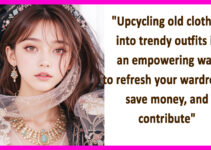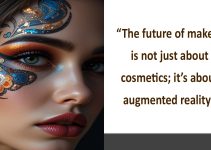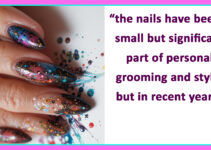Introduction: The Healing Power of Fashion
Fashion has long been considered a form of self-expression, a way to communicate identity, status, and creativity. However, in recent years, researchers and psychologists have started exploring its therapeutic potential, uncovering how clothing choices can affect mood, confidence, and overall well-being.
One of the most compelling aspects of this emerging field is color psychology—the study of how colors influence emotions and behavior. This has given rise to “dopamine dressing,” a concept that suggests wearing bright, uplifting colors can trigger the brain’s dopamine production, boosting happiness and energy levels.
In this article, we’ll explore how fashion can be a form of therapy, the science behind color psychology, the benefits of dopamine dressing, and practical ways to incorporate these concepts into everyday life for better mental health and emotional resilience.
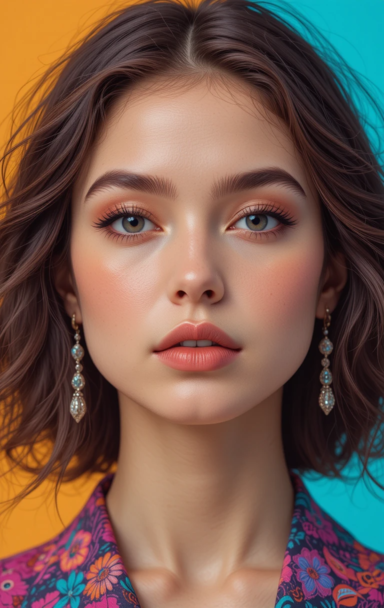
The Link Between Fashion and Mental Health
The idea that clothing can impact mental health is not new. Across cultures, people have used specific colors, patterns, and textures in traditional garments to evoke strength, spirituality, or joy. However, modern research has shed light on how deeply fashion choices can affect psychological well-being.
1. Enclothed Cognition: The Science of What We Wear
The term “enclothed cognition” refers to the psychological influence that clothes have on the wearer’s mood, confidence, and cognitive performance. Studies have shown that the act of wearing certain types of clothing can alter self-perception and behavior.
Key Findings:
- Formal attire boosts confidence and cognitive processing. People who wear structured, professional clothing tend to feel more in control and competent.
- Casual and comfortable clothing reduces stress. Relaxed clothing choices are associated with lower cortisol (stress hormone) levels.
- Colorful outfits impact mood. Bright colors like yellow, orange, and red have been linked to higher energy levels and positivity.
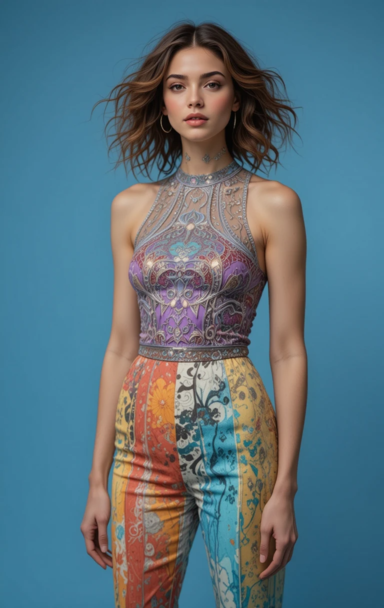
2. Fashion as Emotional Armor
For many people, fashion serves as a form of emotional protection. Whether it’s a power suit for an important meeting or a cozy sweater for comfort, clothing choices often reflect how we want to feel—or how we want others to perceive us.
This concept has been widely explored in therapy, with some mental health professionals encouraging patients to use fashion as a tool for emotional regulation. For example, someone experiencing anxiety may find solace in soft, familiar fabrics, while a person struggling with low energy might benefit from wearing vibrant, bold colors to lift their spirits.
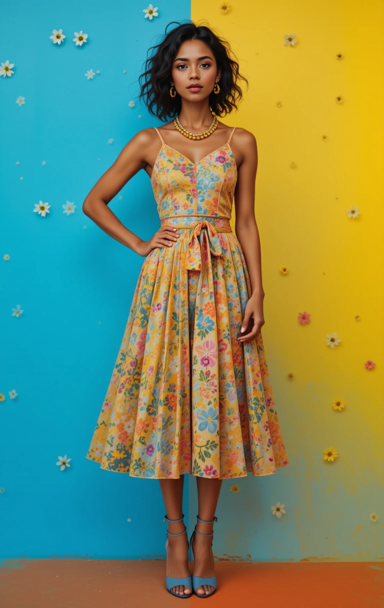
Color Psychology: How Colors Influence Mood
Color psychology is the study of how different hues affect human emotions, behavior, and mental states. Each color has a unique psychological impact, and choosing the right colors can help regulate emotions and promote well-being.
The Psychological Effects of Colors:
| Color | Emotional Impact |
|---|---|
| Red | Increases energy, passion, and excitement; boosts confidence. |
| Orange | Encourages enthusiasm, warmth, and social connection. |
| Yellow | Evokes happiness, optimism, and creativity; associated with dopamine release. |
| Green | Promotes calmness, balance, and renewal; linked to nature and healing. |
| Blue | Reduces stress, enhances focus, and promotes relaxation. |
| Purple | Symbolizes creativity, spirituality, and luxury; can have a calming effect. |
| Pink | Encourages warmth, compassion, and playfulness; often linked to feelings of comfort. |
| Black | Represents power, sophistication, and formality; can also evoke mystery. |
| White | Symbolizes clarity, simplicity, and cleanliness; can create a sense of peace. |
Why Bright Colors Can Boost Mood
Bright colors, particularly yellow, orange, and red, stimulate the release of dopamine, the brain’s “feel-good” neurotransmitter. These hues are associated with increased energy levels and heightened optimism, making them ideal for improving mood on difficult days.
In contrast, cool tones like blue and green have been found to reduce stress and promote relaxation, making them great choices for creating a sense of calm.
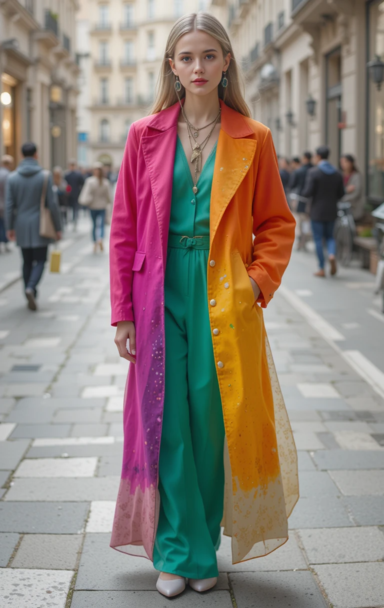
Dopamine Dressing: The Art of Wearing Happiness
What Is Dopamine Dressing?
Dopamine dressing is the intentional use of clothing and color to enhance mood and well-being. The concept is based on the idea that certain colors, textures, and styles can trigger the brain’s dopamine response, leading to higher levels of happiness and confidence.
The trend gained popularity during and after the COVID-19 pandemic, as people sought ways to inject joy into their lives through fashion after months of isolation and uncertainty.
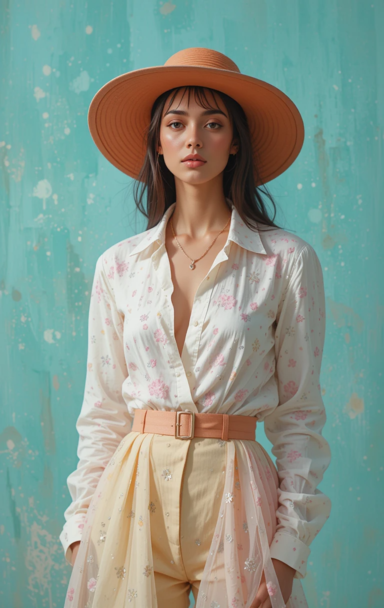
How Dopamine Dressing Works
Dopamine dressing works by stimulating positive associations and memories through color and style. For example:
- Wearing a bright yellow dress can remind you of sunny days, evoking a sense of warmth and optimism.
- A bold red blazer can make you feel powerful and confident, ideal for important meetings.
- Pastel tones, like baby blue or soft pink, can create a sense of calm and relaxation.
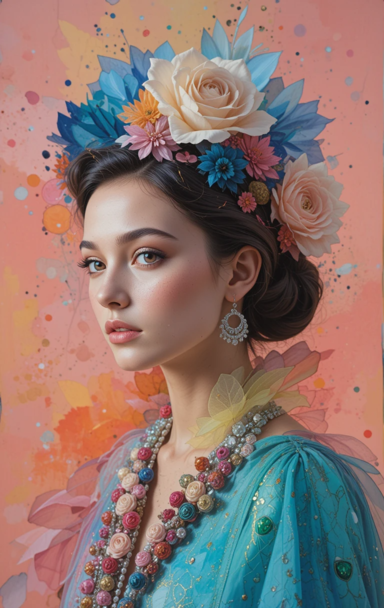
Scientific Evidence Behind Dopamine Dressing
A study published in the journal “Color Research and Application” found that color has a measurable impact on mood, with warm tones linked to higher energy levels and cooler tones associated with relaxation and stability.
In addition, research from The Journal of Consumer Psychology suggests that people who wear bright colors perceive themselves as more attractive and outgoing, reinforcing positive social interactions and self-esteem.
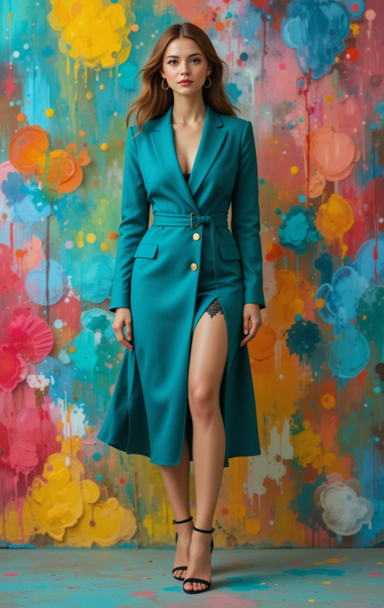
Practical Ways to Use Fashion for Mental Well-Being
1. Identify Your “Happy Colors”
Each person has a unique emotional connection to colors. Pay attention to which hues make you feel energized, calm, or powerful, and incorporate them into your wardrobe.
2. Dress According to Your Emotional Needs
Use color and style to match or elevate your mood:
- If you’re feeling anxious → Wear cool, calming tones (blue, green, soft gray).
- If you need confidence → Opt for bold, powerful colors (red, black, deep purple).
- If you want to feel joyful → Choose bright, warm hues (yellow, orange, coral).
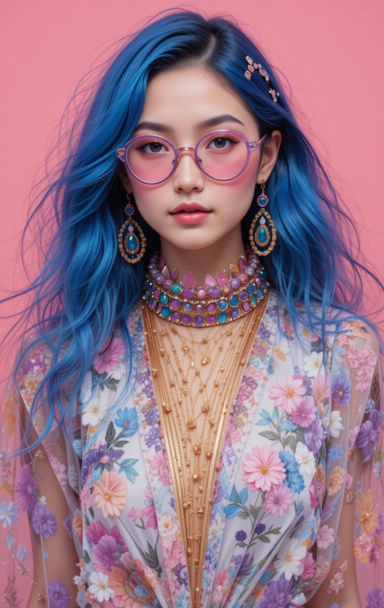
3. Experiment with Textures and Fabrics
- Soft textures (cotton, cashmere) provide comfort and relaxation.
- Structured fabrics (leather, denim) create a sense of strength and resilience.
- Flowy materials (silk, chiffon) promote ease and freedom.
4. Wear Outfits That Reflect Positive Memories
Clothes that remind you of happy experiences (a vacation dress, a childhood sweater) can instantly boost your mood and evoke positive emotions.
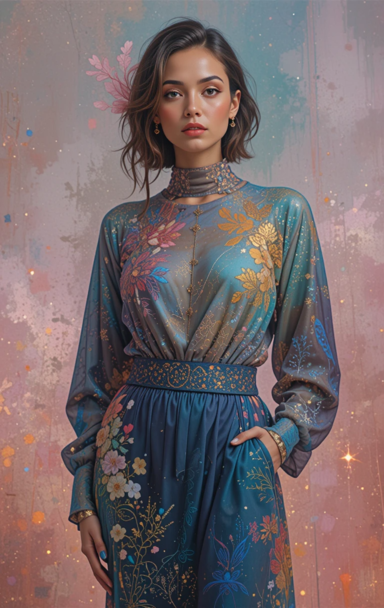
5. Express Yourself Through Fashion
Fashion should be authentic and personal. Wearing clothes that align with your identity builds confidence and self-acceptance, leading to better mental well-being.
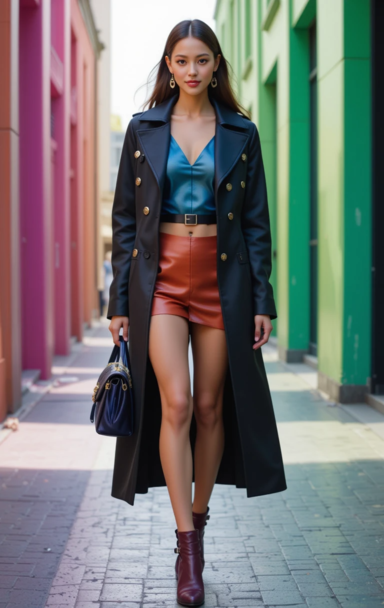
6. Use Accessories to Elevate Your Mood
If wearing bright clothes feels overwhelming, start small:
- Colorful scarves, handbags, or shoes can add a dopamine boost without a full wardrobe change.
- Statement jewelry can serve as a mood-lifting focal point.
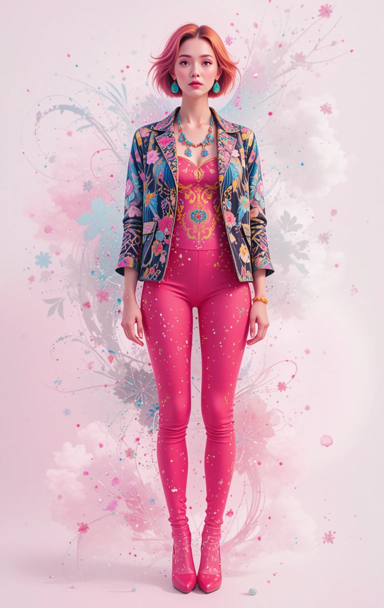
Conclusion: The Future of Fashion as Therapy
The relationship between fashion and mental health is more profound than ever. As awareness of color psychology and dopamine dressing grows, people are increasingly using clothing as a tool for self-care, confidence, and emotional healing.
Whether through bright colors, comforting textures, or nostalgic pieces, fashion has the power to uplift, empower, and heal. In a world where mental health challenges are rising, embracing the therapeutic potential of fashion offers a simple yet powerful way to cultivate joy and well-being in everyday life.
So, the next time you get dressed, ask yourself: What do I want to feel today? The answer might just be hanging in your closet.

